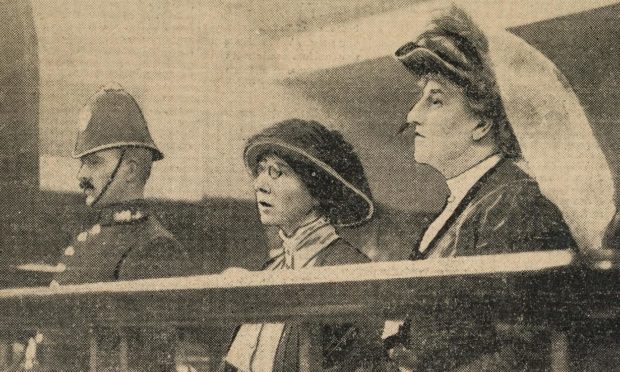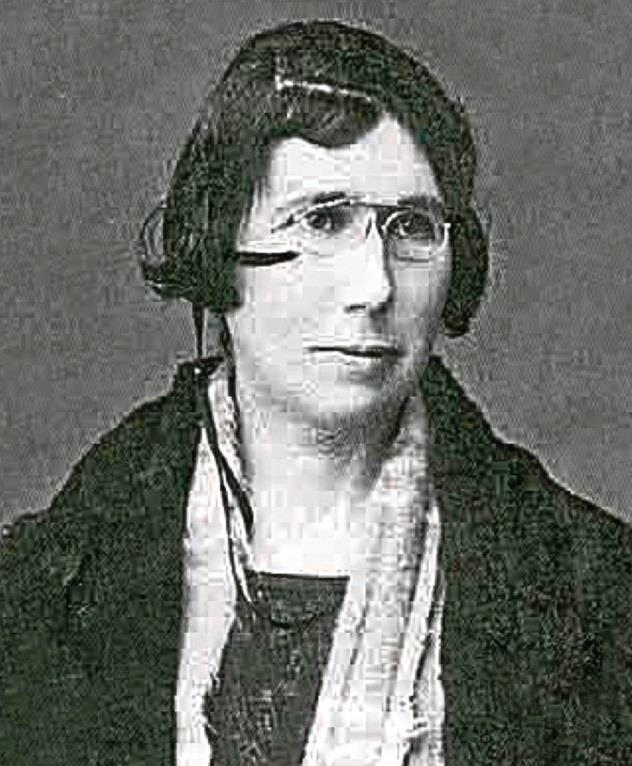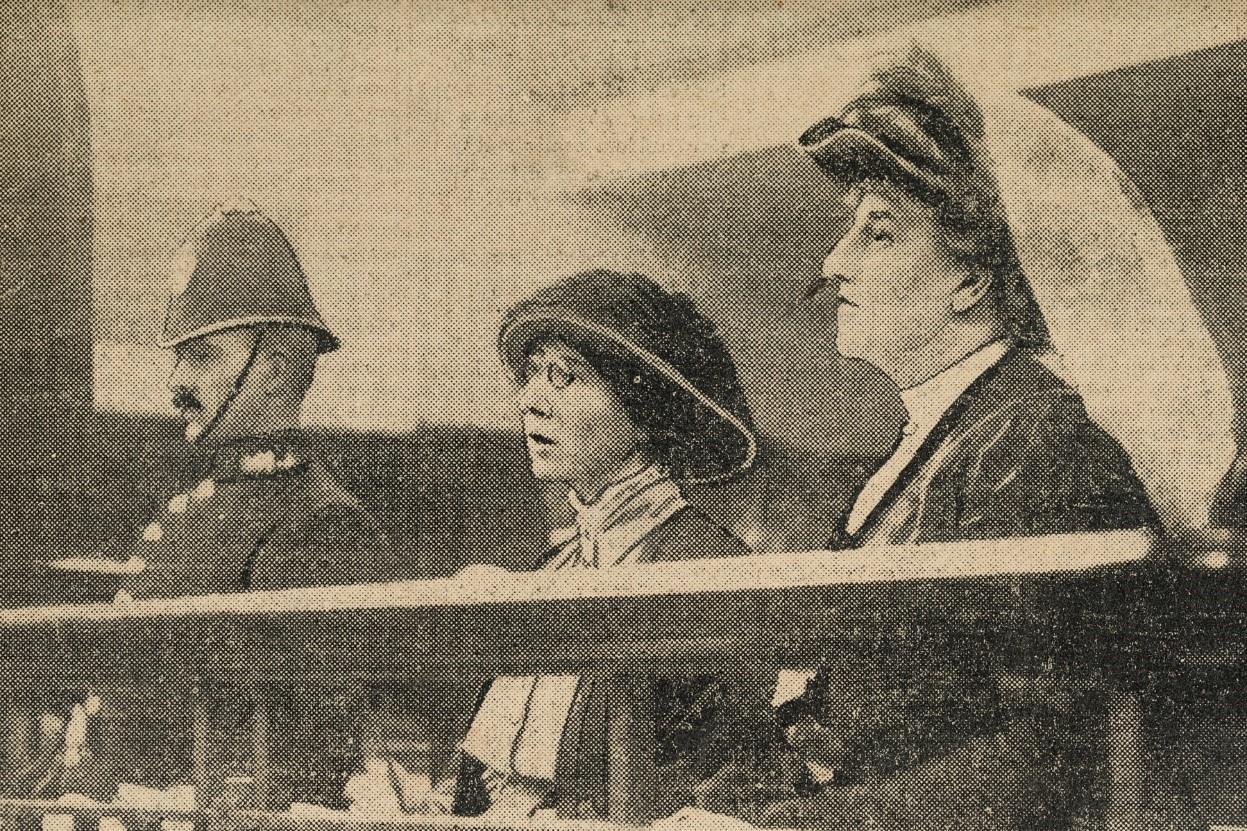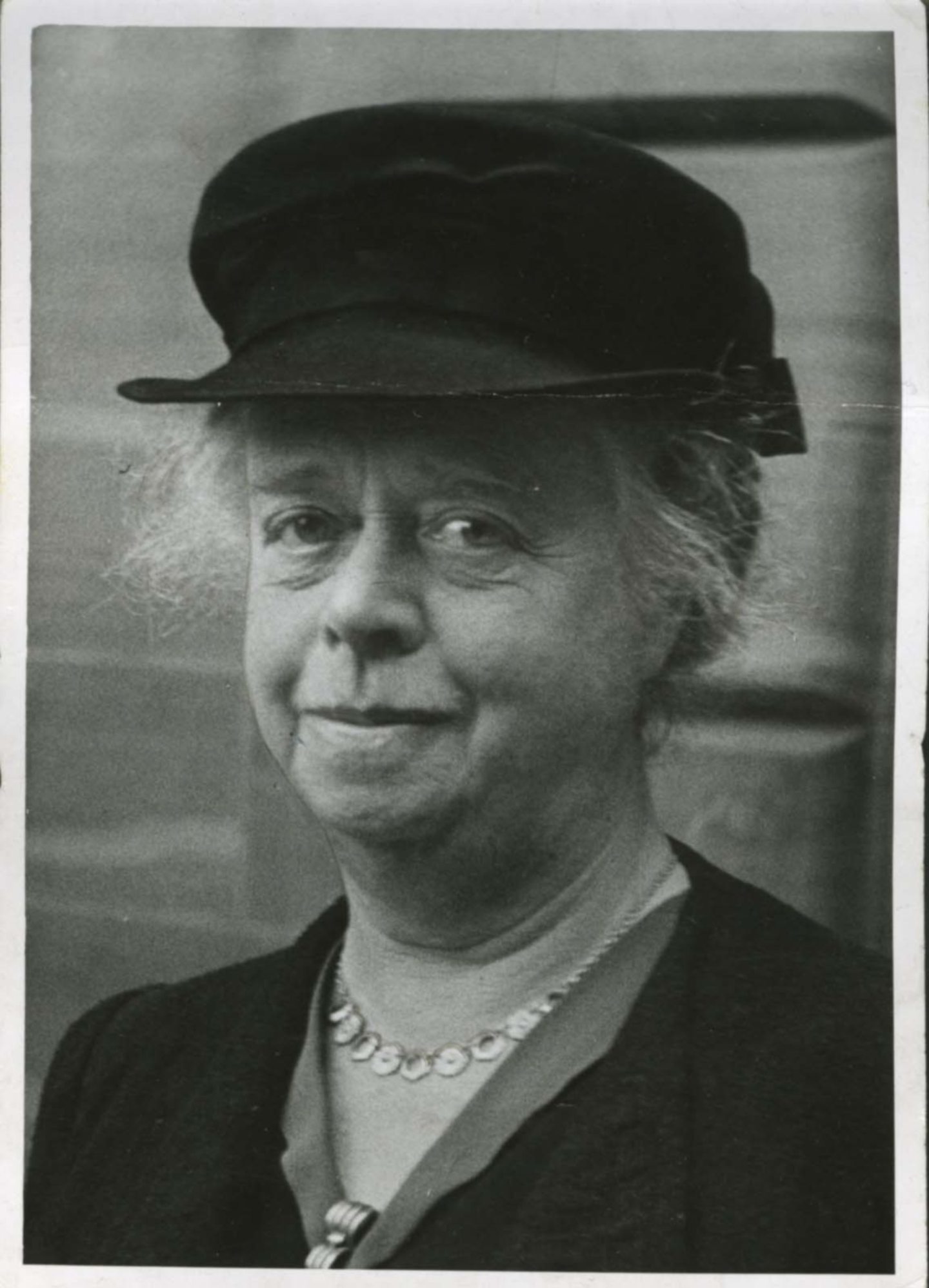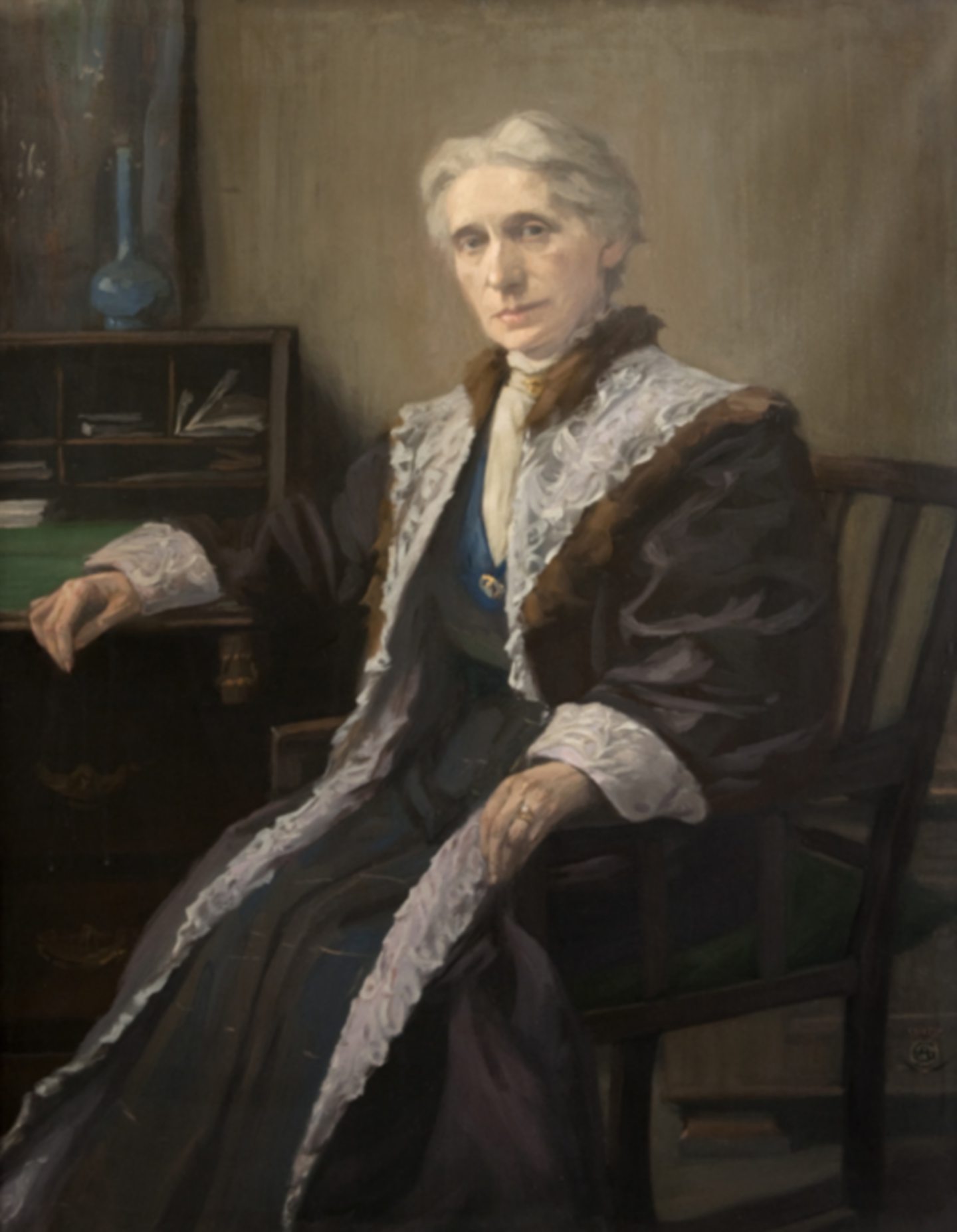She had many aliases – Edith Johnston, Mary Humphreys and Margaret Morrison to name a few – but Ethel Moorhead is still a household name as one of the most famous suffragettes.
Now the life and stories of the adopted Dundonian are featured heavily in a new National Records of Scotland portal, Malicious Mischief? Women’s Suffrage in Scotland’.
Life before the suffragette movement
Ethel was dubbed the Scottish leader of the suffragettes, despite no such position existing.
She was actually English, being born on August 28 1869 in Maidstone, Kent.
Ethel was one of six children of George Moorhead, an Irish Army surgeon, and Margaret Humphreys.
She was raised in India, Mauritius and South Africa where her father was employed before she moved to Paris and trained as an artist between 1898 and 1901.
The Moorhead family moved to Dundee in 1900 while Ethel studied in France.
She later returned home to look after her now elderly parents, exhibiting her artwork in her studio and across Britain.
Her mother died in 1902 and Moorhead cared for her elderly father until his death in 1911.
Although her campaigning and protesting escalated following her father’s death she was already looking for votes for women before he died.
She would go on to repeatedly make the papers through outrageous militant acts. She was convicted a total of five times with her antics allowing ample opportunities to advertise women’s suffrage as her arrest, prosecution, release and re-arrest were followed closely by the press.
A life in protest
One of the first acts of protest Ethel took part in was during the 1911 census in which she refused to be counted as a number, as long as her vote didn’t count.
National Records of Scotland archivist Jocelyn Grant said: “In 1911 the Women’s Freedom League (WFL) organised a boycott of the 1911 census, a form of passive suffragist protest.
“The League proclaimed: ‘If women don’t count, neither shall they be counted’, and refused to provide any form of information to census registrars.
“Although arranged by the WFL many suffrage organisations participated, as letters from individual registrars reveal. Suffragette Ethel Moorhead was one such participant.”
The following year in September 1912, Ethel, under the guise of Edith Johnston, would first be arrested after smashing the case containing the ‘Wallace sword’.
At Stirling Sherriff Court Ethel was convicted of Malicious Mischief and sentenced to a £2 fine, or seven days imprisonment.
She received the custodial sentence.
She was once again in trouble with the law in November of the same year when she was convicted of the assault of Mr Peter Ross at Edinburgh Police Court. She was sentenced to a £1 fine or 10 days imprisonment but this time the fine was paid for her.
Hunger Strike
After the passing of her father, and as the pursuit of women’s suffrage wore on, the militant actions of the suffragettes escalated.
On 15 October 1913, Moorhead and Dorothea Chalmers Smith or Lynas were convicted of house-breaking and attempted fire-raising and sentenced to eight months’ imprisonment.
Jocelyn added: “Both immediately went on hunger strike and were released under the controversial ‘Cat and Mouse Act’ after five days fasting.
“Once she recovered Moorhead disappeared but was re-arrested in February 1914. Committed to Calton Gaol, Edinburgh, she became the first suffragette to be force-fed in Scotland.
“While England had resorted to force-feeding in 1909, it was widely believed that Scotland would not adopt this measure. In reality Scottish authorities had been discussing the possibility of force-feeding as early as 1909 but due to a number of circumstances it was not carried out until 1914.
“Dr James Devon was appointed as Scottish Prisoner Commissioner on 31 March 1913 and was widely credited as having introduced force-feeding to Scotland. Indeed, his notes reveal that he wanted the suffragettes to consider him responsible.”
No suffragettes served their full prison sentence when hunger-striking and the authorities were left in the embarrassing position of being unable to retain their prisoners.
Force-feeding was adopted in an attempt to keep suffragette prisoners healthy enough to serve the duration of their sentence, but it was ineffective. Ethel was force-fed for only four days before being released with double pneumonia.
Jocelyn said: “According to press reports and official memos, doctor Grace Cadell attributed this diagnosis to food entering her lungs through improper feeding.
“However, the medical officer responsible, Dr Ferguson Watson, furiously denied this. He claimed that Moorhead subjected herself to the possibility of ‘getting a chill’ by smashing her cell windows and being inappropriately dressed.
“The reaction of suffrage campaigners, those sympathetic to the cause, as well as press reports, reveal the outrage and disappointment at the actions of the authorities.”
Mary Humphreys and Margaret Morrison
Mary Humphreys and Margaret Morrison were Ethel’s most used aliases with her taking on the identity of Mary in December 1912.
As Mary, Ethel threw a stone, breaking the window of a motor car carrying a Mrs Crombie and two men. Ethel thought the car held David Lloyd George who was the Chancellor of the Exchequer at this time.
She was once again convicted of Malicious Mischief at Aberdeen Police Court and sentenced to a 40s fine or 10 days imprisonment. Ethel was imprisoned and she went on hunger-strike but was released on payment of part of her fine after serving four days of her 10 day sentence.
On February 4 1913 as Margaret Morrison, Ethel threw pepper in a policeman’s face, smashed 12 window panes in Level Police Office and threw a bucket of water over a sergeant in the office.
She was convicted of Assault, Breach of Peace, Malicious Mischief and Assault at Cupar Sheriff Court which landed her the strongest sentences yet when she was handed a £20 fine or 30 days imprisonment. After a two day hunger strike though Ethel was once again released.
The end of the suffragette movement
As the First World War began, action for suffrage was mostly set aside. While some joined anti-war groups, most women campaigners diverted their energy and organisational skills into supporting servicemen’s families, nursing and other voluntary work.
Ethel Moorhead helped to run the Women’s Freedom League National Service Organisation, campaigning for women war workers to be properly paid.
In 1918 women over the age of 30 who had property were finally allowed to vote. It would take another 10 years for the right to be extended to women over the age of 21.
In the 1920s she went on to travel with her protégé Ernest Walsh and co-edited an English language review of art and literature.
She died in a nursing home in Dublin on March 4 1955.
Other prominent Dundee sufragettes
Lila Clunas was born in Glasgow but moved to Dundee to become a teacher at Brown Street Public School, where Duke’s Corner is now.
She joined the movement in 1906 and quickly became a prominent member.
In 1908, during one of Churchill’s election meetings, Lila was forcibly ejected. In 1909 she travelled to 10 Downing Street with eight other members of the Women’s Freedom League.
Lila was arrested and charged with obstruction for attempting to present a petition.
She was sentenced to three weeks in prison, becoming the first Dundee suffragette to be held in London.
She immediately began a hunger strike which led to her early release.
In 1943 during the Second World War, she was elected to Dundee Town Council as a Labour Party member, where she served until 1964.
Agnes Husband was appointed as one of Dundee’s first female councillors in 1901.
She worked long and hard on behalf of the poor and for better education.
Agnes was an active member of the suffragettes and tirelessly campaigned for women’s rights to vote. She supported and encouraged her sisters to join the movement, too. At the age of 74 Agnes was awarded freedom of the city.
National Records of Scotland Portal
National Records of Scotland holds a wealth of records about suffragette activities in Scotland, including their prosecution, imprisonment, newspaper reports and cases of force-feeding.
In 2018 they celebrated the centenary of some women gaining the parliamentary vote with the exhibition ‘Malicious Mischief? Women’s Suffrage in Scotland’.
As part of the exhibition, a mini-website was produced giving visitors access to: a timeline of women’s suffrage; selected transcriptions of census returns from the 1911 census; and images of the complete files relating to the suffragettes featured in the exhibition.
Originally this resource was only accessible in-person, onsite in the Matheson Dome, but has now been published and is available online.
